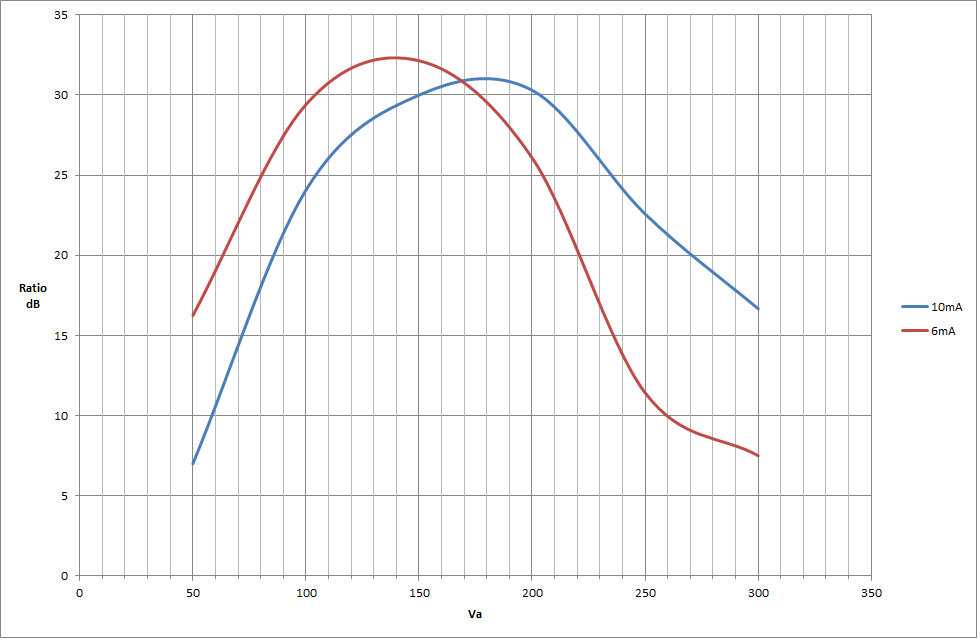I'm planning to design and build a compressor based on the EF85/6BY7 Tube.
Years ago I was given 21 NOS EF85's, half are Mullard and half Siemens. They are unusually good remote pentodes, but they went out of fashion very quickly with radio manufacturers who went for the EF89 instead. The reason was that the gm was just too good for their radio application and the EF89 was used instead because its gm was about half of the EF85. This was unfortunate for the manufacturers who had large stocks of EF85's that they couldn't sell, but good news for us because there are lots of them and they are cheap.
When wired as triodes they leave a 6386 in the dust. gm 7.5 (4.0), mu 32 (17). Read this thread to see what PRR said about them back in 2008:-
http://groupdiy.com/index.php?topic=30349.msg368001#msg368001.
His post was an inspiration but I can't decide on the best way to use them. I could make a conventional pentode matched pair, even make in stereo, or I could make a 660 copy and let the gm rip with four/side. PRR did a back of an envelope design which established the design principles, but I found out during testing that the rp reduces the gain from his figures when used as a triode, (pentode is fine).
I would be very interested to hear what members think before I go any further, also whether PRR has modified his ideas since then.
Best
DaveP
Years ago I was given 21 NOS EF85's, half are Mullard and half Siemens. They are unusually good remote pentodes, but they went out of fashion very quickly with radio manufacturers who went for the EF89 instead. The reason was that the gm was just too good for their radio application and the EF89 was used instead because its gm was about half of the EF85. This was unfortunate for the manufacturers who had large stocks of EF85's that they couldn't sell, but good news for us because there are lots of them and they are cheap.
When wired as triodes they leave a 6386 in the dust. gm 7.5 (4.0), mu 32 (17). Read this thread to see what PRR said about them back in 2008:-
http://groupdiy.com/index.php?topic=30349.msg368001#msg368001.
His post was an inspiration but I can't decide on the best way to use them. I could make a conventional pentode matched pair, even make in stereo, or I could make a 660 copy and let the gm rip with four/side. PRR did a back of an envelope design which established the design principles, but I found out during testing that the rp reduces the gain from his figures when used as a triode, (pentode is fine).
I would be very interested to hear what members think before I go any further, also whether PRR has modified his ideas since then.
Best
DaveP




